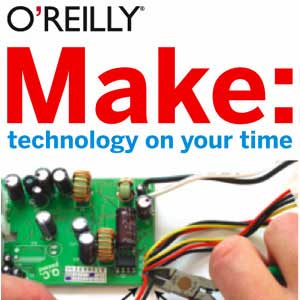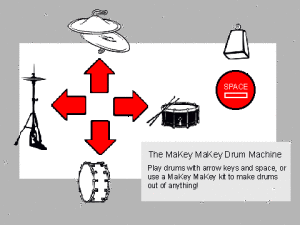 Mitchel Resnick is the director of MIT Media Lab’s Lifelong Kindergarten Group. In a paper called All I Really Need to Know (About Creative Thinking) I Learned (By Studying How Children Learn) in Kindergarten, Resnick defines “Kindergarten-style learning” and explains why he believes it is essential for people of all ages—it even guides his own approach to designing educational technology like Scatch and Cricket.
Mitchel Resnick is the director of MIT Media Lab’s Lifelong Kindergarten Group. In a paper called All I Really Need to Know (About Creative Thinking) I Learned (By Studying How Children Learn) in Kindergarten, Resnick defines “Kindergarten-style learning” and explains why he believes it is essential for people of all ages—it even guides his own approach to designing educational technology like Scatch and Cricket.
Resnick defines the Kindergarten approach as a cycle, pictured at left, and I’ll reflect on each component below:
Imagine – Resnick’s role is to design for designers—kindergarteners of all ages. he is inspired by Friedrich Froebel’s pioneering vision of the first Kindergarten, where he presented a room full of materials (“Froebel’s Gifts”) that serve as the building blocks for creativity.
Here, Resnick identifies an interesting design challenge: the environment and its gifts must be general enough to allow for creative applications beyond what Froebel himself could have imagined. But there need to be some boundaries; the environment also be specific enough to be easily understand so that learning can take place.
Create – design environments made up of building blocks (i.e. Froebel’s Gifts) for designers to construct
Play – Resnick critiques other approaches like “Edutainment” which seem to view education as if it were a bitter-pill that must be sugarcoated in entertainment. Edutainment combines two passive things that we might expect people to provide for us. By contrast, Kindergarten style is active, emphasizing learning through play. Resnick believes that play is “intimately linked” with learning because both involve “experimentation, exploration, and testing the boundaries.” Scratch, encouraged to “Play with code”
Share – important in what Henry Jenkins calls our increasingly “Participatory Culture.” Learn from each other, as a community, exemplified by Scatch’s website of open source games. So not only play/tinker with your own code, but with each other’s.
Reflect – document the process. Reminds me of ITP where we’re encouraged to document everything, hence this blog. It’s one thing to get something working once, but another to be able to recreate it and tinker with it down the line. I love these reflections from children who participated in a workshop utilizing Cricket workshop, who observed that it’s important to…
Start simple
Work on things that you like
If you have no clue what to do, fiddle around
Don’t be afraid to experiment
Find a friend to work with, share ideas!
It’s OK to copy stuff (to give you an idea)
Keep your ideas in a sketch book
Build, take apart, rebuild
Lots of things can go wrong, stick with it
…Failed experiments can be part of the learning process as long as they are supported by these sorts of encouraging reflections. Resnick called the workshop a success because the children not only learned, but learned how to learn.
Resnick’s approach to learning isn’t limited to kindergartners, but geared to learners of all ages, and he follows this approach himself when designing software like Scratch and Cricket. There are a lot of parallels to the way we approach learning at ITP, a program that provides a community of learners with certain building blocks and then encourages us to play with these tools, we share our work with each other often through open source code, and share skills through group prototyping, we document/reflect on everything, and then we iterate in an imaginative cycle.
Resnick’s “Kindergarten approach to learning” reminds me of Chris Crawford’s definition of “Interaction,” which I read for this week’s Physical Computing course at ITP. Both authors call for iteration through a cycle of steps. Crawford defines interaction as two actors Listening, Thinking, and Speaking. Resnick adds step because he wants to see learning take place through interaction. Crawford is writing for interaction designers, while Resnick is writing for what I might call “education designers” who are designing experiences/environments for young designers to take part in the programming. Interaction Designers are different from User Interface Designers because the former tweak the “thinking” aspect of the interaction, i.e. core functionality that is not traditionally made available to User Interface Designers. Resnick takes things a step further because he believes that if we can put “thinking” into the hands of the people who are interacting with the technology, that is the key to learning.
When Resnick refers to “designing for designers,” sometimes I wonder if this is always the best approach to learning? It’s not like all children are going to grow up to become designers…
 :: Dale Dougherty has some persuasive answers to this question in his article The Maker Mindset. The founder of MAKE Magazine and, more recently, the nonprofit Maker Education Initiative, Dougherty believes that the Maker Mindset can transform education.
:: Dale Dougherty has some persuasive answers to this question in his article The Maker Mindset. The founder of MAKE Magazine and, more recently, the nonprofit Maker Education Initiative, Dougherty believes that the Maker Mindset can transform education.
The Maker Mindset builds off of Carol Dweck’s book Mindsets in which the Stanford psychology professor found that some people have “Fixed Mindsets”—meaning they believe that their knowledge/abilities have a limit and they’re pretty close to maxed out—while others have “Growth Mindsets.” People with a Growth Mindset believe they can do anything they put their mind to, and Dougherty emphasizes how essential this becomes in a world that is constantly changing. The Maker Mindset is a type of Growth Mindset through which people believe they can turn their ideas into reality. This is achieved by constantly experimenting, tinkering, and pushing the boundaries of what’s possible using what you already know. In the process, you’ll expand your own body of knowledge and probably create some cool things. Dougherty acknowledges that makers are not mainstream these days, driven largely by internal goals rather than external/social rewards. But he believes that Make can be even more of a social mindset if it is built around sharing, and that this starts with education.
To bring the Maker Mindset to education, Dougherty calls for the development of projects, kits and curricula. He wants young people to take leadership roles and join communities outside of school. Communities can provide exhibition space for makers that invites and inspires further participation. Dougherty believes that a record of participation in maker communities could be a valuable part of a young person’s résumé. What Resnick described as passive “edutainment,” Dougherty might call “consuming” and he believes that education by making things is the best way forward.
I’m not sure how I feel about the way Dougherty has built a brand out of the word “MAKE”, but I certainly do admire his mindset!
:: In Designing For Tinkerability, co-authors Resnick and Eric Rosenbaum critique Make’s approach because it is sometime narrowly misinterpreted as “making” physical things when really, for these guys, it’s more about the broad approach to making no matter the form. Tinkering is too often in the shadow of the more logical Planning, they argue, but in fact the ability to improvise and incorporate bricolage is increasingly essential. Resnick and Rosenbaum go on to share some of the thinking behind their respective tinkerable kits: Scatch and MaKey MaKey. Both kits are designed for tinkerability which in their veiw requires three things:
1.) Immediate Feedback – because tinkering means lots of quick experiments, and you’re not gonna sit around waiting for the results. Scratch shows the values of all variables (not the norm for programming languages) and lets you tinker while it’s running to see the results in real time. Makey has indicator lights to let you know what’s going on.
2.) Fluid Experimentation – it’s important to minimize the setup so that you can get started right away. Many programming languages require a lot of code just to get started and compiling and all this stuff that Scratch takes care of so that the user can focus on creating. Scratch has a “visual syntax” meaning that you can see if a certain object will take a type of input just by looking at the LEGO-like connector shapes. Like LEGO pieces, you can unplug blocks and leave them in your workspace and they won’t interfere with your other code the way that stray code would in most programming environments. Following the LEGO analogy, the kits may not be the sturdiest way to build something, but they aren’t designed for that, they’re designed to be tinkerable.
3.) Open Exploration – Both kits let you use a variety of materials to create projects that fall under a variety of genres. Scratch materials include the preloaded sprites and objects, but you can also make your own and find millions more sources of inspiration from the online community, all licensed under the tinkering-friendly Creative Commons Attribution-ShareAlike license. MaKey doesn’t come with anything preloaded, but with this tool “the world is your construction kit.” Both MaKey and Scratch are tools that can be used to play across genres (in more than just the musical sense) which is valuable because tinkerers tend to work “bottom-up” where they start out not knowing what they’re building and through many iterations they may touch upon a bunch of different genres before they determine the goal at the top.
Side note: I wonder if my application ought to encourage non-musical exploration…
In Resnick and Rosenbaum’s final note on this article, they touch upon the idea that the kits they’ve built can’t encourage tinkerability on their own; they need to be used in a tinker-friendly context. Educators looking to get the most out of their kits are advised to emphasize the process over the product…themes over challenges (broad enough so that each person cares about what they’re working on, but specific enough so that everybody feels it’s a shared experience…highlight examples for inspiration…give questions as answers. This is very inspiring to me because just the way we learn by doing, if we can answer our own questions, we’ll understand the answer better than if we’re given the answer through edutainment.
:: Some notes from What Develops in Musical Development? A View of Development As Learning by Jeanne Bamberger
- Hearing music is a performance because we reconstruct it in our minds. So the same tune can sound different when we hear it in different contexts.
- Cognitive developmental tracks how we organize perception and strategies to understand the world. Some are situational (context) and others are abstract (systems to categorize the world).
- When educators use just one organization symbol system (like musical notation) that privileges certain types of categorization (“ontological imperialism”) and it’s important to have a lot of different ways to understand the world/music. Interactions between these various understandings foster complexity.
- Trust musical intuition and embrace exceptions to “the rule”
- Whatever children do, there is reason. Explore…
